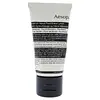What's inside
What's inside
 Benefits
Benefits

 Concerns
Concerns

 Ingredients Side-by-side
Ingredients Side-by-side

Water
Skin ConditioningCaprylic/Capric Triglyceride
MaskingCetearyl Olivate
Sorbitan Olivate
EmulsifyingGlycerin
HumectantFucus Vesiculosus Extract
EmollientCetearyl Alcohol
EmollientRosa Canina Fruit Oil
EmollientChamomilla Recutita Extract
Skin ConditioningLedum Groenlandicum Oil
MaskingThuja Occidentalis Leaf Oil
MaskingAloe Barbadensis Leaf Juice
Skin ConditioningPhenoxyethanol
PreservativeCaprylyl Glycol
EmollientSorbic Acid
PreservativeAcrylates/C10-30 Alkyl Acrylate Crosspolymer
Emulsion StabilisingSodium Hydroxide
BufferingWater, Caprylic/Capric Triglyceride, Cetearyl Olivate, Sorbitan Olivate, Glycerin, Fucus Vesiculosus Extract, Cetearyl Alcohol, Rosa Canina Fruit Oil, Chamomilla Recutita Extract, Ledum Groenlandicum Oil, Thuja Occidentalis Leaf Oil, Aloe Barbadensis Leaf Juice, Phenoxyethanol, Caprylyl Glycol, Sorbic Acid, Acrylates/C10-30 Alkyl Acrylate Crosspolymer, Sodium Hydroxide
Water
Skin ConditioningRosa Canina Fruit Oil
EmollientGlycerin
HumectantCetearyl Olivate
Cetearyl Alcohol
EmollientStearic Acid
CleansingHamamelis Virginiana Water
AstringentSorbitan Olivate
EmulsifyingButyrospermum Parkii Butter
Skin ConditioningPolysorbate 20
EmulsifyingPhenoxyethanol
PreservativeOlea Europaea Fruit Oil
MaskingFusanus Spicatus Wood Oil
MaskingBisabolol
MaskingPanthenol
Skin ConditioningSodium Benzoate
MaskingDisodium EDTA
Sodium Citrate
BufferingPogostemon Cablin Leaf Oil
MaskingCitrus Aurantium Dulcis Flower Oil
AstringentEugenia Caryophyllus Flower Oil
MaskingZingiber Officinale Root Extract
MaskingBenzoic Acid
MaskingFarnesol
PerfumingEugenol
PerfumingLinalool
PerfumingLimonene
PerfumingGeraniol
PerfumingWater, Rosa Canina Fruit Oil, Glycerin, Cetearyl Olivate, Cetearyl Alcohol, Stearic Acid, Hamamelis Virginiana Water, Sorbitan Olivate, Butyrospermum Parkii Butter, Polysorbate 20, Phenoxyethanol, Olea Europaea Fruit Oil, Fusanus Spicatus Wood Oil, Bisabolol, Panthenol, Sodium Benzoate, Disodium EDTA, Sodium Citrate, Pogostemon Cablin Leaf Oil, Citrus Aurantium Dulcis Flower Oil, Eugenia Caryophyllus Flower Oil, Zingiber Officinale Root Extract, Benzoic Acid, Farnesol, Eugenol, Linalool, Limonene, Geraniol
Ingredients Explained
These ingredients are found in both products.
Ingredients higher up in an ingredient list are typically present in a larger amount.
Cetearyl alcohol is a mixture of two fatty alcohols: cetyl alcohol and stearyl alcohol. It is mainly used as an emulsifier. Emulsifiers help prevent the separation of oils and products. Due to its composition, it can also be used to thicken a product or help create foam.
Cetearyl alcohol is an emollient. Emollients help soothe and hydrate the skin by trapping moisture.
Studies show Cetearyl alcohol is non-toxic and non-irritating. The FDA allows products labeled "alcohol-free" to have fatty alcohols.
This ingredient is usually derived from plant oils such as palm, vegetable, or coconut oils. There is debate on whether this ingredient will cause acne.
Due to the fatty acid base, this ingredient may not be Malassezia folliculitis safe.
Learn more about Cetearyl AlcoholCetearyl Olivate is an emulsifier and texture enhancer. It is derived from the fatty acids of olive oil and Cetearyl alcohol, and is biodegradable.
As an emulsifier, it is used to prevent oils and waters from separating. It can also
Manufacturers use the name Olivem 1000. This ingredient has been found to preserve the natural microbiome of skin. Having a healthy microbiome helps keep our skin healthy and protects against harmful bacteria. This ingredient is grouped with Sorbitan Olivate under the name Olivem 1000.
Learn more about Cetearyl OlivateGlycerin is already naturally found in your skin. It helps moisturize and protect your skin.
A study from 2016 found glycerin to be more effective as a humectant than AHAs and hyaluronic acid.
As a humectant, it helps the skin stay hydrated by pulling moisture to your skin. The low molecular weight of glycerin allows it to pull moisture into the deeper layers of your skin.
Hydrated skin improves your skin barrier; Your skin barrier helps protect against irritants and bacteria.
Glycerin has also been found to have antimicrobial and antiviral properties. Due to these properties, glycerin is often used in wound and burn treatments.
In cosmetics, glycerin is usually derived from plants such as soybean or palm. However, it can also be sourced from animals, such as tallow or animal fat.
This ingredient is organic, colorless, odorless, and non-toxic.
Glycerin is the name for this ingredient in American English. British English uses Glycerol/Glycerine.
Learn more about GlycerinPhenoxyethanol is a preservative that has germicide, antimicrobial, and aromatic properties. Studies show that phenoxyethanol can prevent microbial growth. By itself, it has a scent that is similar to that of a rose.
It's often used in formulations along with Caprylyl Glycol to preserve the shelf life of products.
Rosehip Oil is a non-fragrant plant oil. Rosehips are a fruit from a rose bush and are edible. This oil has skin conditioning and hydrating properties.
Rosehip contains Vitamin C, Vitamin E, fatty acids and linolenic acids. These nourish your skin barrier. Having hydrated skin may help reduce the appearance of fine-lines and wrinkles.
Another great component of Rosehip Oil is Vitamin A, or retinol. Vitamin A encourages your skin to create more collagen.
Rosehip oil may help with reducing pigmentation. The lycopene and beta-carotene have skin-lightening properties. However, more studies are needed to confirm this.
Learn more about Rosa Canina Fruit OilSorbitan Olivate is created from the fatty acids in olive oil and sorbitol.
This ingredient is an oil in water emulsifier. It helps stabilize a product by preventing oils and waters from separating. Sorbitan Olivate also helps hydrate the skin.
Manufacturers sell sorbitan olivate under the name OliveM 1000. OliveM 1000 a multifunctional ingredient. It is self-emulsifying. According to a manufacturer, OliveM 1000 does not disrupt natural skin biome.
Due to its olive oil base, this ingredient may not be fungal-acne safe.
Learn more about Sorbitan OlivateWater. It's the most common cosmetic ingredient of all. You'll usually see it at the top of ingredient lists, meaning that it makes up the largest part of the product.
So why is it so popular? Water most often acts as a solvent - this means that it helps dissolve other ingredients into the formulation.
You'll also recognize water as that liquid we all need to stay alive. If you see this, drink a glass of water. Stay hydrated!
Learn more about Water